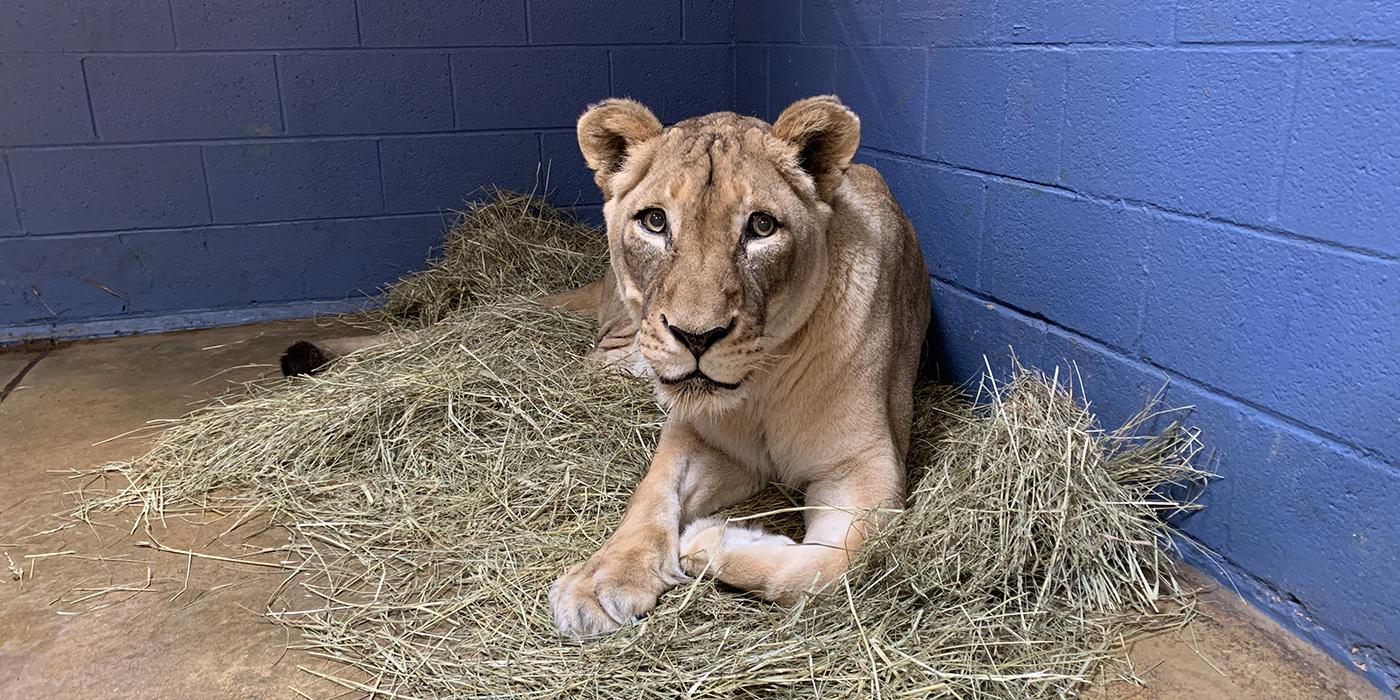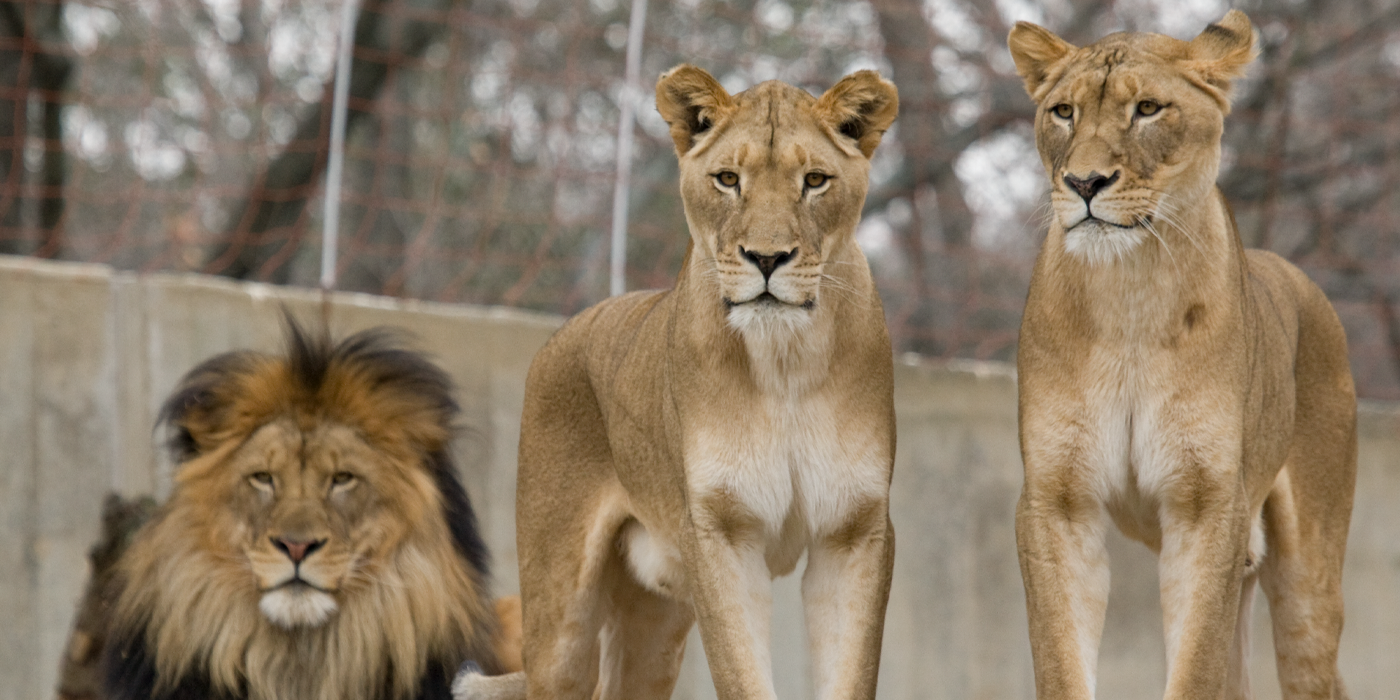Science Q&A with Authors of New Lion Reproductive Study
A mystery: African lions are breeding, but they’re not producing cubs. Smithsonian Conservation Biology Institute science sleuths are on the case! Their goal: to determine the cause of the cub “bust” by studying the hormones in female lion feces.
Their findings were published a PLOS-ONE paper entitled, "Characterization of Ovarian Steroid Patterns in Female African Lions, and the Effects of Contraception on Reproductive Function," published Oct. 13, 2015. Authors SCBI reproductive physiologist Budhan Pukazhenthi and lab technician Sarah Putman talk about what their findings mean for the future of this vulnerable species.
Why study lion reproduction?
African lions in zoos in North America are managed by a Species Survival Plan (SSP). Among other things, the SSP makes decisions about breeding recommendations and provides husbandry and management guidance to zoos.
In the early 1990s, the number of lions under human care had reached holding capacity and the SSP recognized that there were lions in the population that could potentially be African/Asiatic lion hybrids because the two species had not previously been managed separately.
The SSP instated a breeding moratorium in 1993 to help control the population size, to prevent hybrids from producing offspring. At the same time, they imported 14 lions from Africa to boost the genetic diversity within the population.
In 1998, the moratorium was lifted and breeding recommendations between animals of known genetic background were made. However, managers noted a lower than normal birth rate between 1998 and 2004. At that time, the SSP requested assistance from the Smithsonian Conservation Biology Institute in determining the source of low offspring production. This study emerged from that request.
Why is it important to know a female lion’s hormone levels?
In order for the reproductive physiologists at SCBI (and elsewhere) to identify the cause of poor reproduction in lions, we realized that first we needed to have the basic information about lion reproduction and their hormone levels.
This study set out to characterize the hormone patterns of normally cycling individuals of diverse age and then determine any differences in those patterns in lions that previously had been unsuccessful in conceiving.
How do you tell one lion’s poo from another?
Our lion keepers collected fecal samples from 10 individual lions. They did so by using glitter and other food items as marking tools. Interestingly, none of these material are digested and appear in the feces making it easy to identify the animal.
The lions were fed separately each day and the keepers sprinkled different colors of glitter, or other items like split peas and whole corn, onto each animal’s diet of meat before the animal ate it. The keepers kept a record of who ate which marker.
The next day when they were cleaning the enclosures, they would put a piece of fecal material that had a specific color of glitter or corn pieces in it into a baggie labeled with the animal’s name and date. The samples were stored in a freezer until they could be brought to SCBI in Front Royal for analysis.
What information can you learn from poo?
We can learn a lot from fecals! We were specifically looking at reproductive and adrenal (also call stress hormone) hormone concentrations in each sample. But, you can also determine an animals’ diet just by looking at the feces. Additionally, one can identify the genetic makeup of an individual as well as identify individuals in a population (wild) based on the cells (DNA) coating or bound to the feces.
Did you learn anything surprising?
One thing we found that we were not expecting was that the youngest females included in the study were cycling. Based on wild data, they should not have reached puberty yet.
This then led us to look at the body weights of cubs and the results indicated that lions were growing at a faster rate in human care compared to the wild. This is likely due to the consistent diet of high quality food lions in human care receive compared to the unpredictable diet that cubs in the wild consume.
Another significant finding was that the contraceptives currently in use in lions were lot more efficient (effective for a longer duration) than the duration they were thought to be effective. As a result, some of the females were 'shut down' for several years compared to 8-12 months (which would be normal).
What does this mean for zoos that want to breed lions?
New information/knowledge from this study will allow managers and researchers to better manage their collections. We are now able to conduct pregnancy tests to inform institutions if their animals are pregnant. With the unexpected results we obtained with contraception, additional research is now warranted to identify a more reliable/predictable drug to contracept lions.
If we identify a reliable contraception, institutions can safely exhibit lions in prides and would not have to separate males and females. Overall, these advances would allow lion holders to avoid a 'baby boom' and hopefully eliminate a “bust”—i.e. a breeding season with no cubs.
This story appears in the November 2015 issue of National Zoo News. Janine L. Brown, Ashley D. Franklin, Emily C. Schneider, Nicole P. Boisseau and Cheryl S. Asa also contributed to the journal publication.
Want science stories delivered straight to your inbox? Sign up for the e-newsletter here.
Related Species:




